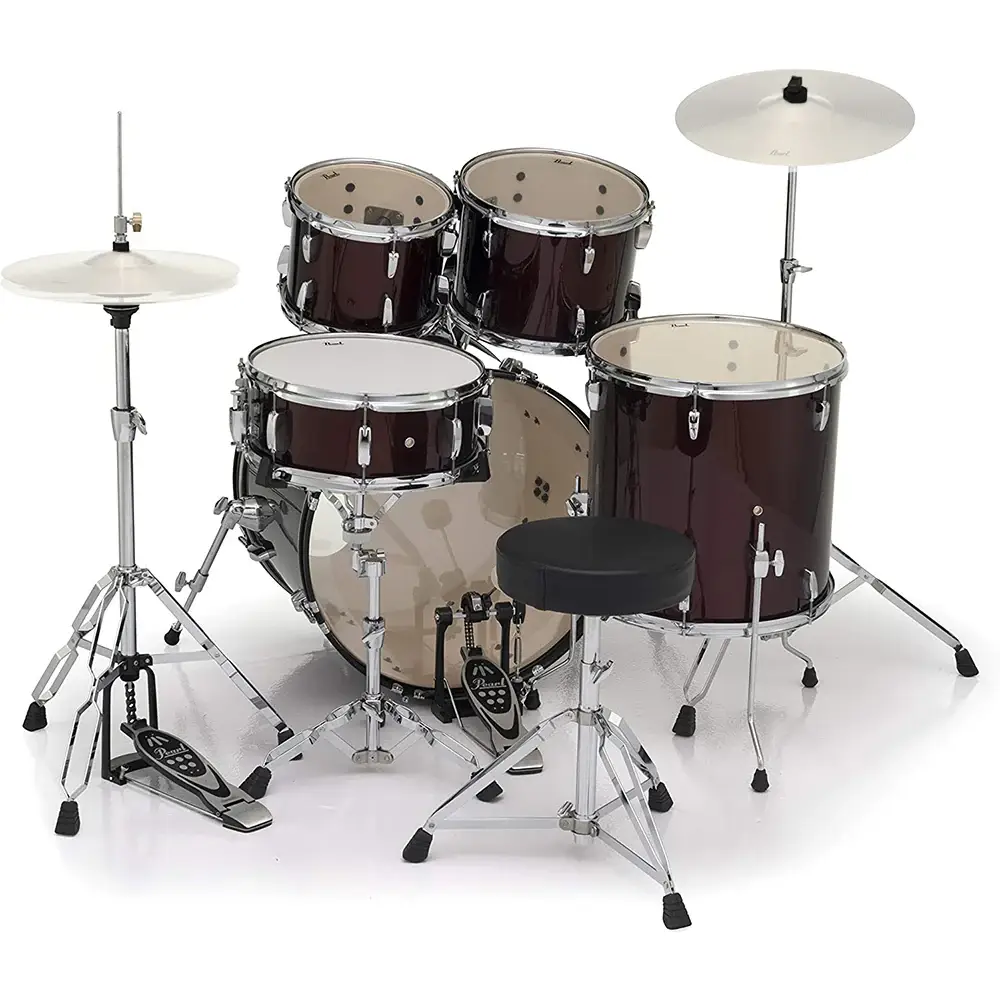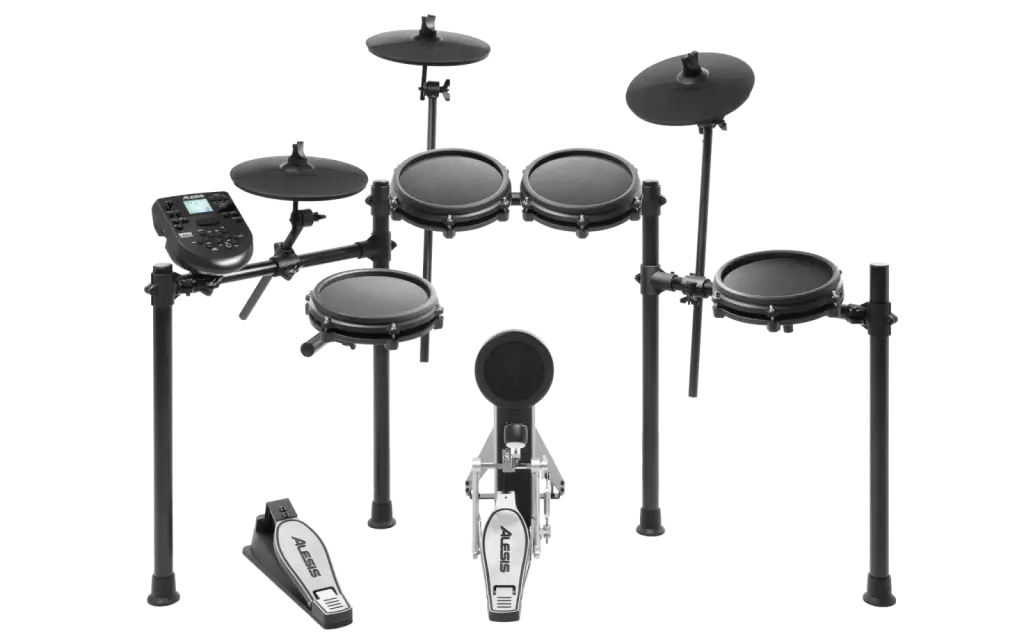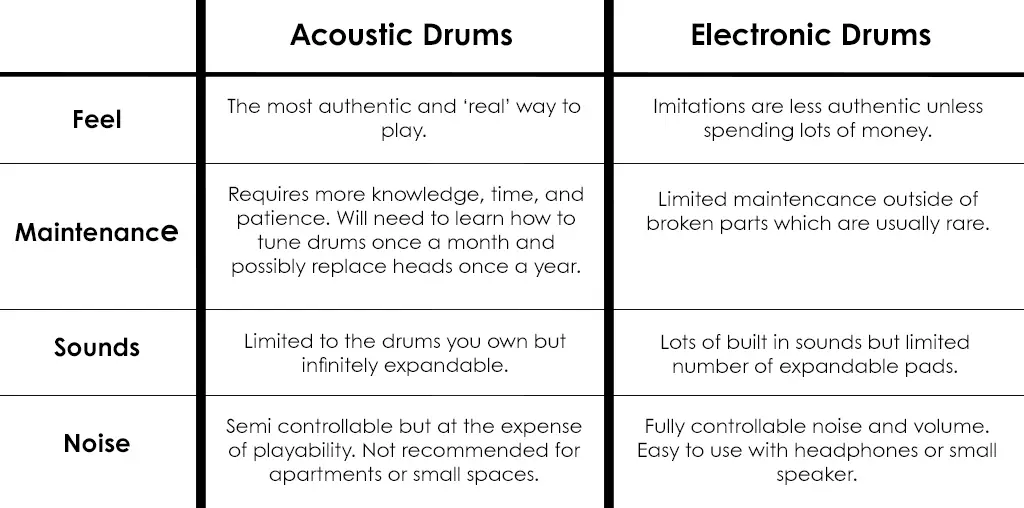Technology continues to advance at an amazing pace. From appliances and computers to guitars and pianos, we have more options and variety than ever before. And while that variety is very good, it can also create a lot of confusion.
When I get a new student on drums, I’m often asked what drum set they should buy. Should they go with the traditional acoustic drum set or should be buy an electric drum set? The answer often depends on what they value and their needs.
In this article we’ll examine both options as well as the pro’s and con’s of each one.
Acoustic Drums

An acoustic set is what you most commonly see on stage. They produce their own sound and do not require any electricity to produce a noise. The quality of an acoustic set comes down to the quality of the construction and wood as well as the drum heads and how well they are tuned. They are the original way the drums were created and are often the preferred option for professionals and touring musicians.
All Natural
Pretty much every technique you will learn is intended for or created on an acoustic kit. Because of their more ‘natural’ creation, there is nothing that’s off limits when it comes to how you create sounds. Hitting the rim of the drums, not a problem. Hitting the bell of the crash cymbal, why wouldn’t you? Using your cymbal stands as instruments, of course! Nothing is off limits and you are free to create whatever you want.
Maintenance
Something that people don’t consider when buying an acoustic set is how much maintenance goes into keeping a drum set in good shape. With that freedom comes responsibility. You need to understand how to set up your stands, where to put your cymbals, and how to tune and replace drum heads. Tuning especially is an art as much as it is a science. It takes most people years just to even get good at that. If you don’t have the ear or the patience for it, you may find yourself frustrated or paying someone extra to come visit your house and make sure it’s put together right.
The Noise!
The most obvious problem for some people with the acoustic set is how much noise it produces. Acoustic drums are very loud and can be a huge problem if you’re trying to practice in an apartment or a shared condo. There are ways of dampening the sound of an acoustic drum set but it often comes at the expense of the playability and feel of the real thing. The two most common ways people dampen the sound are through drum pads or by changing to lighter sticks such as hot rods. You can also dampen the kick drum buy putting an excessive amount of pillows or blankets inside the kick drum.
Electronic Drums

The electronic set was first commercially available in 1976. Since it’s meager beginnings, the electronic drums have had many updates and upgrades. Better sounds, more variety of toms and cymbals, upgrades to the pads, and more sophisticated drum brains are just a few things to mention. It’s safe to say that even in the past 10 years electronic drums have made huge improvement and are becoming better and more accessible even to the average consumer.
Let's Get Crazy!
An electronic drum set is composed of two sets of parts: the pad and the brain. The pad is what you hit with your drum stick and sends an electronic impulse down a wire. The harder the impulse the stronger the signal. On the other end of all the pad wires is the brain. The brain’s job is to decipher the where the signal is coming from and how strong the signal is. It then sends out the assigned sound simulating the drum you just hit.
Unlike an acoustic kit, you are not limited to the sound you are provided. Electronic kits come with a large variety of sounds which you can switch between and create some crazy sounding drum kits. Even the cheapest of sets will have at least a handful of sounds to cycle through. On more expensive kits you’ll have a large variety of sounds and may even be able to import your own. There are even computer programs you can hook your electronic drums up to and get even more sounds! But this usually comes at a steep price and is reserved for more professional drummers.
Set It And Forget It
Compared to acoustic drums, electric drums don’t require any sort of tuning or maintenance. The sounds are all stored in the brain so there’s not much to do outside of the initial setup. Many electronic sets come on a rack so setup is generally easier. Just follow the instructions and you’re good to go!
Obsolete?
When a drum pad or brain does break or get damaged though, replacing it can be a problem. This fast paced improvement comes at the cost of having drums become obsolete quicker and quicker. This isn’t always the case with certain manufacturers but it is a concern and something to consider.
Freedom Isn't Free
Unlike the acoustic drums, electronic kits do have limitations on the noises you can create and produce. You can only create electronic sounds based on the number of pads you have and what those pads have built into them. While many manufacturers will allow you to expand beyond the initial package you purchase, you’re limited by the number of inputs you have in your drum brain. Some drum brains might have five or six extra ports while others might have only one or two if at all.
Many beginner electronic sets will also have more limited features such as not having a bell on the ride or using a different type of spring and pedal for the hihat. For the purists who want the authentic feel of a drum set, this will likely be a deal breaker as even the cheapest of acoustic sets still have the feel of ‘Real’ drums because they ARE ‘Real’ drums.
Did You Hear Something?
The option that most people consider with an electronic set is the option to just put on headphones and not disturb anyone else around you. They’ll still hear the small ‘dink’ of the drum sticks hitting the pads but it’s a paltry sound compared to the booming nature of the acoustic drums.
You also have the option to buy a small speaker and hook it up to your electric drums. It’s not as subtle but you still have the ability to turn up and down the volume on your speaker when necessary.

There is no one right answer to this debate. It just depends on your interests and what you value. I hope this has been a valuable breakdown. Check out our next article as we continue Drum Month!
Other Posts

Effective Practice Routines for Busy Musicians: Maximize Your Progress
Balancing music practice with a busy lifestyle can be challenging. However, by using your practice time strategically, you can still make significant progress, regardless of

What’s The Difference Between Time Signatures?
Time signatures come in all sorts of shapes and sizes. When they show up on your sheet music, it’s important to understand what they’re trying

Rock Guitar 101: Twenty Essential Riffs Every Beginner Should Learn
Picking up the guitar is thrilling, especially when you can quickly dive into playing iconic rock riffs. Learning classic riffs isn’t just enjoyable—it also helps